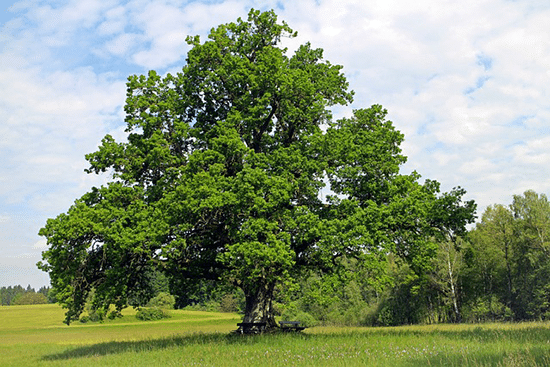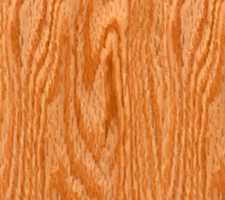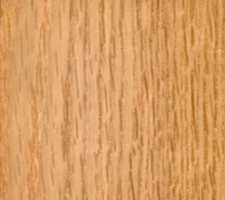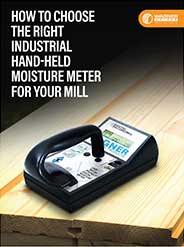The Wood Moisture Legacies of Oak
 Few can deny the treasure of having oak flooring, cabinetry, or furniture. It has a rich color, its grain is well-defined, and its strength is something to be reckoned with.
Few can deny the treasure of having oak flooring, cabinetry, or furniture. It has a rich color, its grain is well-defined, and its strength is something to be reckoned with.
There are many types of oak subspecies, but red and white oak are the most commonly used in American woodworking projects. In this article, we’ll be taking an in-depth look at them.
However, that’s not all. If you hope to use oak in your projects and have them come out successfully, you’ll need to know about one other important thing: moisture content.
So, let’s take a look at:
- The types of oak
- Oak moisture content
Types of Oak
As we’ve already noted, North America has many species of oak, including:
- Chestnut oak
- Laurel oak
- Southern live oak
- Red oak
- Black oak
- Pin oak
- White oak
- Burr oak
However, red and white oak are the most common types you’ll use in woodworking.
Red Oak
 Red oak wood can vary from a light gold to a reddish brown. It’s open-grained and porous with very prominent grain patterns. It has a Janka Hardness Rating of 1290, which is about the middle of the road.
Red oak wood can vary from a light gold to a reddish brown. It’s open-grained and porous with very prominent grain patterns. It has a Janka Hardness Rating of 1290, which is about the middle of the road.
Because red oak is more porous, it’s not the best option for outdoor furniture or other outdoor uses. Moisture can easily penetrate it and cause warping, bowing, or other moisture-related problems.
Instead, it’s best to save red oak for indoor projects, like:
- Furniture
- Cabinets
- Flooring
This is why you’re more likely to find red oak at home centers.
Having a more porous wood is helpful for indoor projects because the wood will be more receptive to stain. It’ll absorb color faster, easier, and deeper, though it may look more blotchy than other wood.
Red oak is more commonly available than other types of oak, making it a less expensive variety. These reasons may be why it’s not used for fine furniture as much as its cousin white oak.
White Oak
 White oak wood has a warm golden glow to it, as well as a finer grain than red oak, due to its slower growth as a tree. Because it’s less available, it tends to be more expensive than red oak.
White oak wood has a warm golden glow to it, as well as a finer grain than red oak, due to its slower growth as a tree. Because it’s less available, it tends to be more expensive than red oak.
White oak has a Janka Hardness Rating of 1360. This is somewhat harder than red oak and thus more durable. It probably won’t dent or scratch as easily, making it a more suitable option for furniture.
It’s also preferred for outdoor projects, due to its moisture-resistant properties. The wood’s closed grain defends it against rotting and makes it suitable for outdoor furniture or boats, which encounter water often.
Also, because of its closed grain, white oak stains more evenly than red oak. Woodworkers love to stain and seal white oak to highlight its many possible grain colors: dark brown, light brown, or brown with yellow tones.
Now that we’ve done an overview of red and white oak, let’s figure out how to work with the moisture content of oak.

Free Download – 6 Reasons Your Wood Project Failed
Oak Moisture Content
Moisture content in oak, just like in any other wood, is something to keep track of when you’re working with it.
Oak especially demands patience and finesse.
If over-dried, it can wear out saws and chip easily during machining. Yet if it’s too wet, it can crack, split, warp, or twist after you use it in your project.
In fact, if you’re making something out of oak for indoor use—say, a table or lampstand—you’ll want a moisture content between 6% and 8%. And oak used for wood flooring should be dried to around 6% to 9%.
At the same time, oak needs to reach what’s called the equilibrium moisture content, or EMC for short. The EMC is the point at which wood neither gains nor loses moisture.
Wood responds to the relative humidity (RH) and temperature in its environment. So if your wood is wetter than the RH and temperature, it will release moisture to balance with the environment. If the wood is drier than the environment, it will absorb some of the moisture in the air. Wood will continue to gain or lose moisture as needed until it reaches the EMC.
That’s also why it’s important to let the wood sit for a while in the environment it will ultimately end up in (like a house or shop). That way, it will have a chance to reach the EMC there.
The way to know if you’ve reached the EMC is by using a wood moisture meter.
Using a moisture meter
Moisture meters allow you to test the moisture content of your wood during every stage of the production process. Measure the wood before and after the kiln-drying process and during the manufacturing or woodworking process to ensure the wood has reached the EMC and stays there.
There are two main types of moisture meters: pin-type meters and pinless meters. Pin meters use two little pins or prongs that stick into the wood to get a reading. Pinless meters use a sensor pad to scan the wood.
Both work, but pinless are the way to go because they take less time and don’t damage your wood, making moisture measurement easy and fast.
It’s extremely important not only to have and use a moisture meter but also to have one that’s good quality. A poor-quality meter could give a false reading, leaving you with an inaccurate assessment of the moisture content. And that could cause your flooring to fail, the woodworking project to crack, and more woodworking disasters. Which can cause your reputation as a woodworker or flooring installer to suffer.
With a Wagner moisture meter, you’ll never have to doubt the quality. Wagner Meters features state-of-the-art digital pinless wood moisture meters to help you assess the moisture content of your oak projects.
Our line of meters is cost-effective and accurate, while also offering some important features. One of those is a species setting, which accounts for differences in density and chemical makeup. Before measuring, input the species number for the type of oak you’re working with, and you’re set to go.
Then, all you have to do is scan it across the board to get multiple readings in seconds.
A Quality Moisture Meter Means a Quality Oak Project
Oak is a majestic choice when it comes to woodworking and flooring installation. It’s durable, relatively inexpensive, and beautiful. With a quality moisture meter, you can ensure your oak project remains that way.
When are you upping the quality of your oak projects? Check out Wagner Meters’ shop today.
As Sales Manager for Wagner Meters, Ron has more than 35 years of experience with instrumentation and measurement systems in different industries. In previous positions, he has served as Regional Sales Manager, Product and Projects Manager, and Sales Manager for manufacturers involved in measurement instrumentation.
Last updated on September 6th, 2024




When doing a new construction should the HRV system be up and running before testing the MC of hardwood flooring before installing?
Solid wood flooring should always be acclimated to the environmental conditions (temperature and relative humidity) that it will be exposed to in normal service conditions. These conditions really should be in the range of 65 to 75 degrees F, and between 30% and 50% RH.
So, if to obtain those in-service conditions you need to have your HVAC system up and running, then the answer is yes.
For additional technical information, contact the US-based, National Wood Flooring Association in St. Louis, MO.